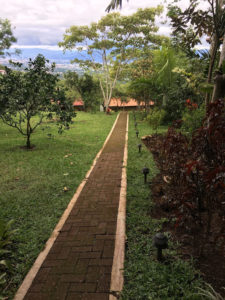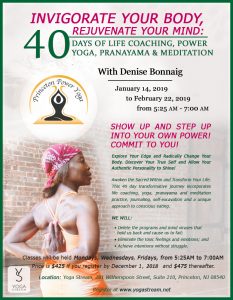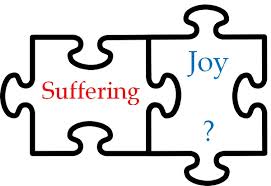Connecting through Screens: Strengthening Bonds Despite Challenges!
THE EXCAVATED MIND CREATES ROOM FOR MEANINGFUL TRANSFORMATIVE ACTION

When setting goals at the beginning of the year, we do so with a strong determination to succeed. So why don’t we succeed? Why aren’t we getting the desired results?
When I conduct group coaching on this theme, every year during my 40 Days of Life Coaching, Power Yoga, Pranayama, and Meditation program, I start with assessing the participants’ states of mind. The detailed questionnaire I ask them to complete at the start of the program sheds light on the patterns and tendencies of each participant and gives me a clear idea of the work we will need to do.
To ensure success, we work on rewiring the brain, by releasing patterns and tendencies. When participants begin to change their perspective, they also realize that until they release negative patterns and tendencies the actions taken towards goals are akin to driving with brakes on.
One of the tools that is effective in releasing patterns and tendencies is Authentique’s FUGT coaching model (Forgiveness Unconditional Love, Gratitude, and Trust). It seems simple, but it’s not easy to implement. The good news is that with practice, each participant develops a clearer understanding of the process. Clarity creates the space needed to strategize, and to engage in the actions required in order to reach the desired outcome. Time and time again, during the strategizing sessions, participants begin to let go of the non-loving feelings. This reframing creates a positive and empowering outlook and leaves more space to implement what truly matters.
The key here is that participants begin to understand that there can be no peace of mind when we hold grudges, feel hatred, animosity, experience doubt, and crave approval from others for the choices we make or don’t make.
The other key realization is that to achieve goals without consciously taking meaningful transformative action is not possible. When people feel stuck or give up their goals after purportedly “trying everything, it is generally because they were driving with the brakes on.
Once clarity begins to emerge, and non-loving feelings are released, we become unstoppable and ready to take the necessary action with strong determination because the excavated self is a great engine that drives our actions.
So, what is the appropriate meaningful transformative action?
There are two types of actions: wholesome and unwholesome. Wholesome actions do not harm you nor others, but propel you forward. Unwholesome actions harm you or others, and will drag you down. Use your powers of discernment to know the difference.
Personal goals are set the same way you would set professional goals. You create a plan with the necessary action steps to get the desired outcome. Remember though that even when we set SMART goals, i.e. goals that are Specific, Measurable, Achievable, Relevant, and Time-Bound, we must commit to taking action.
What amount of action should you take? You cannot measure it out—Be bold, set your sight high—chances are, if you haven’t reached your goal, you probably haven’t truly committed to the process.
Taking meaningful transformative action won’t be easy. In general, people try to use shortcuts or simply don’t realize that you must keep that goal at the forefront of your life and do whatever it takes to get desired results. If you’re tired, don’t quit—just rest. And then continue taking small actions daily. Your old habits will start to feel neglected and create some resistance. That’s okay; lovingly examine what your habits are trying to tell you, and forgive yourself for having developed those habits in the first place, and let go of the negative feelings.
As you take action, seek out the multitude of counselors that will be supportive of you. Be in a community that is also committed to meaningful transformative action. Elevate others and minimize judgment of others. Respect others’ journeys.
Starting over and over is also a form of taking meaningful transformative action; each time you start over, you are getting closer to your desired outcome.
Students of Eastern philosophy may ask, why take massive action if we don’t control the outcome of our actions? Ultimately, the point is to be in action all the time, so that the action and the outcome merge. The point is to be in live action, living a life you love.
The key is in your hand

The Buddha says to get out of your suffering, you must let go of your attachments, your aversions and your ignorance.
The third one of these concepts, IGNORANCE, is the one that held the key to my own inner freedom.
Ignorance in the sense of not knowing that there is a way out of your suffering, not knowing that you can use your mind to let go of your attachments and aversions. In other words, the knowledge that we can master our mind and navigate our existence with a sense of inner peace.
As I observed when I embarked on this journey years ago, the developments in technology, the invention and discoveries in various fields have brought much comfort to our existence and stretched our imagination beyond the imaginable, yet these breakthroughs have not alleviated human suffering or distress. In fact, the hectic pace of our lives, the uncertainty of our situation- financial and spiritual- are leading to an existential crisis that manifests itself in all sorts of ways- anger, resentment, fear, loneliness, etc.
Could the way out of suffering then involve becoming the master of your own mind through stillness?
All the great teachers of every religion and faith have had an intimate relationship with stillness. They all have in one way or another created a prominent space in their practices for introspective, meditative moments, moments of silence where they journeyed within. The more life pulled them into its noisy spheres, the more they turned within, the more they sought wisdom or solace from an inner space that made them transcendent in our eyes. Buddha, Jesus, Gandhi, Mandela, Martin Luther King…
In some traditions, meditation is keeping nothing on your mind, it is the act of emptying the mind of thoughts, feelings, wishes, and desires; in others, it’s the repetition of a mantra, the study and recitation of spiritual texts.
My own path always guides me back to the Vipassana meditation. A meditation tradition that teaches us to cleanse, to purify our mind by introspection. Vipassana means seeing things as they really are. We are invited to become observers, to see and feel what really is NOW. We observe our breath and our sensations in every single part of the body, from the crown of the head to the tips of the toes, with equanimity. And we travel up and down our bodies, scanning non-stop throughout the duration of the meditation.
Does the mind stop its chatter? Of course not. The reality is that the mind is always thinking. But what you will come to realize if you stick to a regular practice, is that by meditating twice daily, you’re training your mind to become aware of the impermanence of life. You notice in the process that nothing lasts forever, that a thought comes, but as you keep observing your breath and scanning your body, the mind quiets a little, then another thought comes then it disappears, and the space between the thoughts increases, and the normalcy of things, ideas, stories passing through, begins to resonate with you, and your attachments and aversions begin to evaporate and dissolve little by little.
You discover that you have the power to control your mind. Thoughts come, you let them go, and more thoughts come and you keep letting them go. Again and again. Just like that. You are the one doing the letting go. Only you have the power to control your mind, and your mind only, no one else’s mind.
No matter what we try, no one can REALLY teach you how to meditate. Meditation is a skill that cannot be imparted intellectually. It is s a skill you acquire experimentally, a skill you embody by practicing regularly.
There is no “wrong way” to meditate. Simply put, you cannot fail.
So, choose to take action. Sit on your mat daily and just do it and see and feel what happens, without expectations. You might surprise yourself and come to the realization that the Vipassana meditation offers tools to help you out of your own ignorance by teaching you how to control and master your mind. The contents of the mind will no longer bother you as you become aware of and learn to accept the ever fluctuating condition of our human existence.
The key is in your hand, you know what to do to find inner peace, you know what to do to let go of all of your attachments and aversions.

Would you like to invigorate your body and rejuvenate your mind? Come join me for the 40 Days of Life Coaching, Power Yoga, Pranayama & Meditation- which is back by popular demand! Mark your calendars for January 14, 2019 to February 22, 2019. Early bird registration deadline is December 1, 2018. See flyer below. Register @ www.yogastream.net/

IGNORANCE JUST MEANS THAT YOU DON’T KNOW THAT THERE IS A WAY OUT OF YOUR SUFFERING

“People are so skillful in their ignorance.”
-Paramahamsa Yogananda
 I have not blogged for some time on Authentique Coaching, though I have been present in interacting with many of you, through coaching, yoga, and the practice of law.
I have not blogged for some time on Authentique Coaching, though I have been present in interacting with many of you, through coaching, yoga, and the practice of law.
I continue to produce and run workshops, weekly immersions, and teacher training certification programs through Princeton Power Yoga, while coaching individuals who seek to transform all areas of their lives for the better, and live a more fulfilled life.
Once a year, I continue to attend the silent Vipassana meditation retreats, and just completed my seventh sit. This is a lever like no other, that adds tremendous value to the work I do. So, to me, silent sits are an ironclad commitment- an investment that yields concrete results.
There is something in particular, I keep noticing as a Personal, Life, and Executive Coach, which is that there is a tendency to be ignorant, which all of us have in common, no matter how bright and talented we are.
Your first question may be, how can a bright and talented person be ignorant? I did not say “lack knowledge.” I said “ignorant,” meaning not knowing that there is a way out of their suffering.
That was my biggest take-away from Vipassana this year, and I am determined to help others remove ignorance from their lives, and replace it with joy, peace, and equanimity.
If I can give you the gift of knowing how to eradicate ignorance, I would feel like a large part of my life’s mission is accomplished.
The process is simple. It certainly is not easy. All it takes is commitment. You all know commitment- you have acquired advanced degrees, raised children, started foundations, and run marathons.
You’re totally capable of doing what’s simple, even if it’s not easy.
The first step is acknowledging that you’re suffering and don’t know your way out of it.
The second step is deciding that you want to find your way out of it.
The third step is determining that you will use your mind and your matter (your physical body) to go beyond mind and matter.
I will be doing a deep dive into each step and integrating my FUGT coaching model, into each step. You will become unstoppable, I promise.
Meanwhile, I encourage you to read (if you haven’t already) the blogs below, about the beginning of my journey in moving out of ignorance.
https://authentiquecoaching.com/2013/09/20/be-the-light-and-be-light/
https://authentiquecoaching.com/2014/06/27/a-journey-to-panya-my-second-vipassana-retreat/
https://authentiquecoaching.com/2014/07/17/a-journey-to-panna-my-second-vipassana-retreat-part-2/

